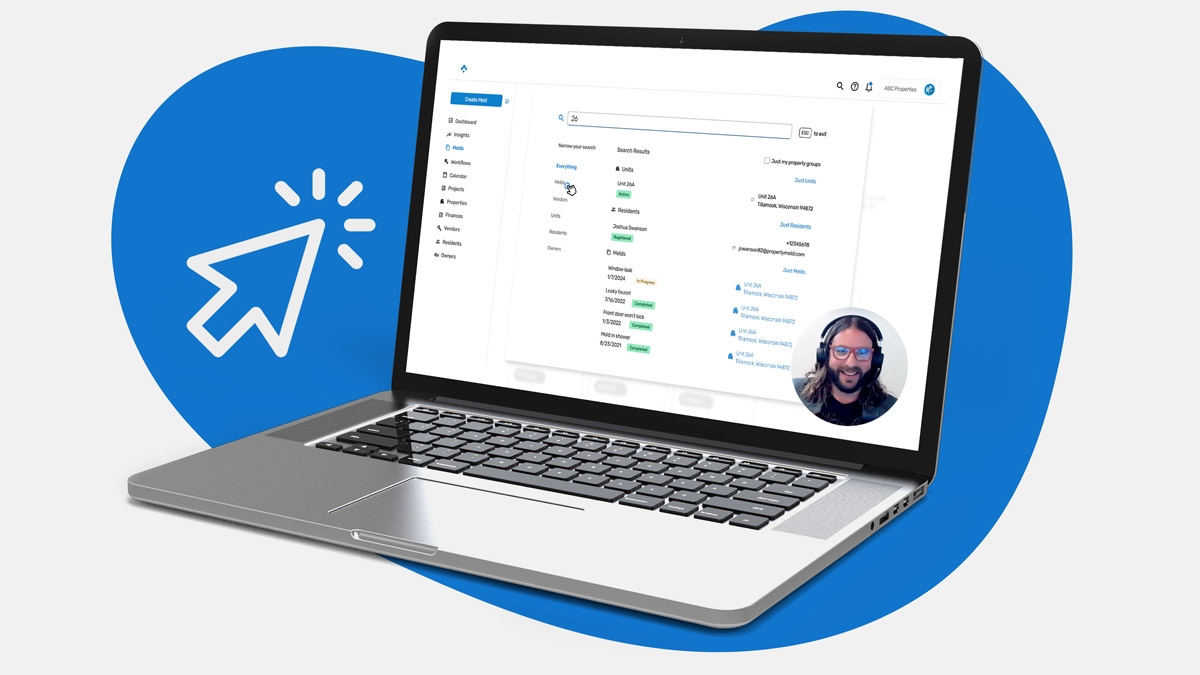In the property management industry, meticulous documentation can be the difference between a smooth operation and a costly lawsuit. When maintenance issues arise, having clear, organized records of work orders, communication logs, and repair timelines is crucial to defending against potential negligence claims. Without proper documentation, property managers may find themselves vulnerable to legal disputes, even if they have acted in good faith. In this article, we will explore documentation best practices for property managers and how Property Meld’s activity log can help create a solid defense against maintenance-related lawsuits. For a broader look at protecting your business from negligence claims, check out our article, How Property Management Companies Can Prevent Negligence Lawsuits.
Why Documentation is Critical in Maintenance-Related Lawsuits
Maintenance-related lawsuits often stem from disputes over the timeliness and adequacy of repairs. Residents may claim that a repair was delayed or not properly addressed, leading to damages such as health issues or property loss. In these cases, documentation serves as your best defense, proving that you took appropriate and timely action.
Thorough documentation can provide:
- Proof of Due Diligence: Demonstrating that you addressed repair requests promptly and followed up on all communications.
- Timeline of Events: Offering an accurate account of when the resident reported the issue, when the repair was completed, and any challenges that may have affected the timeline.
- Compliance with State Laws: Showing that you adhered to state-mandated repair windows, ensuring legal compliance.
Maintenance Documentation Best Practices
- Keep Detailed Work Orders
- Track Every Request: Every maintenance request, whether minor or major, should be logged. Include details such as the date of the request, the description of the issue, and any photos or documentation provided by the resident.
- Assign Technicians and Track Completion: Record when the task was assigned to a technician and when it was completed. Make note of any delays or parts that had to be ordered, as these details can be crucial if a timeline is questioned.
- Maintain Comprehensive Communication Logs
- Record All Interactions: From the first maintenance request to the completion of the repair, every communication with the resident should be documented. This includes phone calls, emails, text messages, or any other forms of communication.
- Automate Where Possible: Using a property maintenance platform like Property Meld helps streamline communication by automatically logging all resident and technician interactions, ensuring nothing is missed.
- Document Repair Timelines
- Track Response Times: Keep a record of when the maintenance request was received and how long it took to respond. This helps demonstrate that you acted within a reasonable or legally mandated time frame.
- Prioritize Emergency vs. Non-Emergency Repairs: Ensure that emergency repairs are clearly marked and attended to within state-specific guidelines. Non-emergency repairs should still be handled promptly, but ensure the appropriate timeframes are followed.
- Photographic Evidence
- Before and After Photos: If possible, document maintenance issues with photos before and after repairs. This can serve as additional proof that the issue was resolved appropriately and in a timely manner.
- Attach Photos to Work Orders: Platforms like Property Meld allow for easy attachment of photos to work orders, providing a clear visual record of the repair.
How Property Meld’s Activity Log Protects Against Legal Risks
Using a dedicated maintenance solution like Property Meld offers property managers an efficient way to track and organize every aspect of maintenance. Here’s how Property Meld’s activity log can strengthen your legal defense against maintenance-related lawsuits:
- Comprehensive Documentation in One Place
- Centralized Record Keeping: Property Meld’s activity log consolidates all maintenance-related data into one system, ensuring that nothing is overlooked. This includes work orders, repair requests, communication logs, technician assignments, and completion dates.
- Timestamped Entries: Every action taken within the platform is automatically timestamped, providing an accurate timeline of events. If a tenant disputes the timeline, you can refer to these records to prove that repairs were made in a timely manner.
- Real-Time Communication Tracking
- Automated Communication Logs: Property Meld tracks all resident interactions, including maintenance requests and follow-up communications. This ensures you have a full log of what was communicated and when—essential for preventing misunderstandings or disputes.
- Notifications and Alerts: The platform also sends automated alerts to both property managers and residents, keeping everyone informed about repair progress. These alerts are documented, offering further proof that you’re keeping the resident updated on the status of repairs.
- Repair Scheduling and Prioritization
- Efficient Task Management: Property Meld helps you assign and prioritize repairs, ensuring that urgent issues are addressed immediately and that all repairs are completed within the legal timeframe. This automatic prioritization helps avoid costly delays that could lead to negligence claims.
- Proof of Compliance with Legal Deadlines: Many states have specific laws about how quickly repairs must be addressed. Property Meld helps ensure compliance with these timelines by tracking repair progress in real time and providing reminders about pending deadlines.
- Easily Accessible Reports
- On-Demand Reporting: In the event of a legal dispute, Property Meld’s reporting feature allows you to generate detailed records of maintenance activities for specific units or time periods. This can serve as valuable evidence in court, showing that you followed proper procedures and maintained the property to a safe and habitable standard.
The Legal Advantages of Thorough Documentation
When facing a potential lawsuit, being able to present a well-documented case can be the difference between a favorable outcome and a costly settlement. Here are some of the key legal benefits of maintaining thorough maintenance records:
- Demonstrating Good Faith: If a resident claims negligence, detailed records of your maintenance activities can show that you acted in good faith to address their concerns, making it less likely for a court to side with the resident.
- Defending Against Habitability Claims: Proper documentation proves that you met your obligations to keep the property safe and habitable, which is essential when defending against negligence or habitability claims.
- Avoiding Liability for Delays: In some cases, delays in repairs may be outside of your control (e.g., waiting for parts or contractor availability). Documentation helps show that these delays were reasonable and not due to negligence.
In the property management industry, thorough documentation is your best defense against maintenance-related lawsuits. By maintaining detailed work orders, communication logs, and repair timelines, you can prove that you acted responsibly and in accordance with legal requirements. Property Meld’s activity log simplifies this process, providing an all-in-one solution for tracking and documenting every step of the maintenance process.
To learn more about how documentation can protect your business, explore our in-depth article, How Property Management Companies Can Prevent Negligence Lawsuits. Using the right tools and following best practices will help you minimize legal risks and ensure a strong defense if a dispute ever arises.






